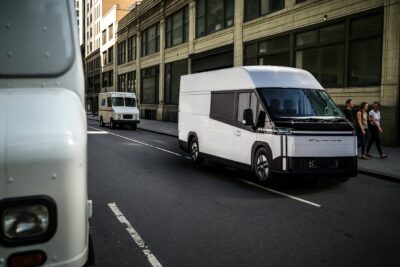Insolvency: Renault’s H2 subsidiary Hyvia fights to stay afloat
Hyvia filed for insolvency at the end of last year, which the Commercial Court of Versaille approved in December. In the meantime, the “legal recovery procedure,” which would have expired on 31 January, has been extended by a few weeks so there is still a chance of stabilising the company through a takeover or new investors. It is important to note that, under French insolvency law, the Hyvia case is a “procedure de redressement judiciaire,” i.e., a judicial procedure aiming to reorganise the company. It is not a liquidation procedure (“procedure de liquidation judiciaire”).
Nevertheless, Hyvia’s existence is at stake. By the first deadline of 31 January, finding a viable solution had not been possible. Hyvia cites “the too slow evolution of hydrogen mobility ecosystems in Europe and the very significant development costs required for H2 innovations” as the reason for its financial struggles. For three years, Hyvia had been one of the first companies to invest in hydrogen mobility, developing an offer in a market “which unfortunately still remains absent.”
Hyvia set out in 2021 to commercialise fuel cell-powered light commercial vehicles in Europe from its base in France. Renault and Plug Power first announced the joint initiative in January 2021, before the joint venture was founded in the summer of 2021. Hyvia then approved two versions of H2 vans (in April 2023 and June 2024) and initiated the development of a third generation, which the company also gave a first glimpse of a few months ago at the IAA Transportation and the Paris Motor Show. At the same time, Hyvia inaugurated a plant for the assembly and testing of fuel cells in Flins, France, in 2022.
Initially, Hyvia succeeded in attracting public funding. For example, the joint venture was recognised as an important project of common European interest (‘IPCEI – Hy2Tech’). Hyvia quickly claimed to aim for a market share of 30 per cent in Europe by 2030. The workforce grew accordingly – to 110 employees at the time of the insolvency.
Parallel to the court’s extension of the proceedings, Renault CEO Luca de Meo recently spoke to the National Assembly’s Economic Committee about the situation and prospects for the Renault Group in France. He also discussed the demand for hydrogen-powered passenger cars and light commercial vehicles. Despite many initiatives, Luca de Meo currently sees “no market” in this area, and the situation for Hyvia is thus “very difficult.” Despite considerable financial investment and numerous public subsidies, hydrogen-powered vehicles “are not selling due to a lack of demand.” According to the Renault boss, hydrogen will “power trucks on the main roads and perhaps be used to make green steel. But I see things taking off more slowly than we expected.” However, he emphasised that a van planned for 2026 from Flexis (a joint venture between Renault, the Volvo Group and CMA-CGM) could be equipped with a fuel cell.
The next few weeks will show whether Hyvia survives as a manufacturer. The latest generation of Hyvia vans was supposed to be manufactured completely in the regular production process at the Batilly plant from 2025 on a line with vans of other drive types. According to Hyvia, the number of units should increase. The company did not provide any technical details at the trade fairs in late summer and autumn. However, there was talk of a WLTP range of 700 kilometres in all weather conditions and a refuelling time of five minutes.
media.hyvia.eu, hydrogentoday.info, automobile-propre.com (both in French)





1 Comment